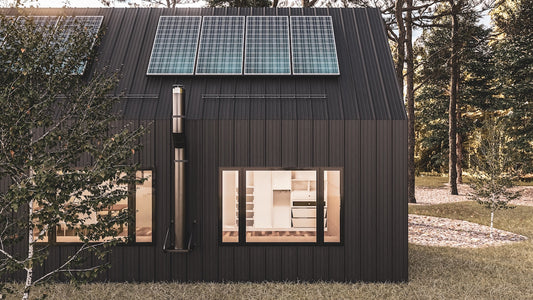Preparation - before the visit
-
Know your budget: It's important to have a clear idea of your budget before visiting the land, as this will help you narrow your options down and avoid falling in love with a property that is out of your price range. Consider if land is wooded and estimate the clearing cost. If the property is large and needs a road, take the price estimation into account as well.
-
Plan the visit to the property ahead of time. Check the location, terrain, and utilities, and be prepared to verify your points while visiting the land. LandGlide App can help you to walk the property. Download the app in advance, test. Make sure to note Property ID (APN), State, and County names. Consider the size and shape of the lot: Think about the size and shape of the lot and how it will fit your needs. A larger lot may give you more space and privacy, but it may also be more expensive and require more maintenance.
-
Research the location: Before visiting the land, it's important to do some research on the area. Consider the distance to nearby amenities, the local school district, and the overall safety of the neighborhood. Check the sites of your interest in the vicinity. If you love nature or have hobbies such as fishing, hunting, hiking, etc. Verify if the location answers your needs. Check googlemaps.com to discover your areas of interest and see how long it would take for you to visit them from the new property location. If it’s a rural property check the reachability to amenities - shopping, hospitals, schools, post, bank, and recreation sites.
-
Future development plans: Check if any future development plans in the area that could impact the property.
-
Check the weather in advance to get maximum light and visibility while on the property. Though, visiting during a rainy period might have some advantages, such as having the possibility to get a glance at the percolation properties of the soil.
-
Call the county and inquire about zoning and land use for the type of house you’d like to build. Keep the parcel ID (APN) or Tax ID and lot size ready, this way the county representative will know exactly which property you are inquiring for. Make sure that no building regulations may impact your plans for the property.
-
If not provided by the seller, check with the County Planning department if the plat map for the given lot is available. Print the map and take it with you.
-
Call the Environmental department to figure out if there is city water or sewer. They will be able to provide the contact details of the utility suppliers.
-
In case the property is part of a Gated Community, ensure to have an access code to the gate or visitation appointment. Print out the Restrictive Covenant Document.
-
Check if there is a website for the Gated Community. Sometimes they have pictures of events or additional information about amenities provided.
-
Remember that daylight hours will be shorter during this time of the year, anticipate the time and distance to reach the property. Also plan in the time needed to visit additional places of interest in the vicinity. If applicable, check their working hours.
-
Take a property listing with you and be prepared to take some notes.
-
Don’t forget to take a pair of boots to walk the property or even cross a creek should there be one.
- If you are visiting with an agent, prepare a list of questions ahead of time. This will accelerate your due diligence time.
- Take a tape measure, level to measure e.g. the diameter of trees on the property or any other objects. In addition, don’t forget your compass.
Visiting the property
- Inspect the land: while visiting the land, be sure to carefully inspect the property, looking for any signs of environmental issues or other potential problems such as wetlands, endangered species, or pollution.
-
Drainage and flooding: Look for any low-lying areas, especially which are near streams or rivers, or areas that are in a flood zone. You should also check for any signs of standing water, such as pools of water or saturated soil, which can indicate poor drainage.
Another important aspect to consider is the property's proximity to any bodies of water. For example, if the property is near a lake or ocean, it may be at risk of flooding or storm surge damage.
Additionally, you should check if the property is in a flood zone, which can impact the property's value and development potential.
- Check the property for any natural features, such as trees, streams, or wetlands. These can affect the property's value and development potential. It's also important to note that a property that's surrounded by natural features such as wetlands, can also be at risk of flooding. These natural features can act as a buffer for the property, and can help protect the property from flooding, but also can restrict the property's development potential.
-
Vegetation and wildlife: Observe the vegetation and wildlife on the property, take notes.
- Access to utilities: Check for access to electricity, water, and other utilities. Take note of any man-made features, such as power lines or utility poles, that could affect the property's development.
-
Topography and soil quality: Assess the topography of the land and the quality of the soil to determine if it is suitable for the intended use.
The topography of the land such as slope, rolling or flat, can impact the property's development potential and potential uses. When assessing the topography, it is important to look for any areas containing steep slopes as they can make construction more difficult and costly.
When assessing the quality of the soil, look out for any signs of poor soil quality, such as soil that is prone to erosion. One of the erosion signs is the presence of bare or exposed soil. This can be caused by the loss of vegetation, sediment washing away, or the formation of deep gullies.
-
In case the property is waterfront and part of HOA, HOA might be able to provide some info if the lot is dockable or at least to give you a contact of the responsible authority. Visit the community recreation area and marina.
-
Take pictures of the property from as many angles as you can. If the property is wooded, photograph the trees. Take pictures from a perspective that allows you to see the terrain of the property. A good option is also in addition to making a film on the property. This will be helpful once you get back home and do your due diligence. Photograph the road, views from the property, and water bodies if any exist.
-
Take some measurements at the property if necessary. First, take note of the property's boundaries. Use a tape measure to determine the property's dimensions, and make sure they match the measurements listed in the property's records. Be sure to also check for any signs of boundary disputes, such as fences or markers that may indicate a property line discrepancy.
-
Walk the neighborhood and maybe talk to one or the other neighbor. Ask about the area, utilities, places of interest, and overall satisfaction while living in the area. Don’t forget to inquire about their construction experience, what were their challenges. If you like the architecture of one or the other house, ask for the developer's contact information. Ask about the type of septic system installed. Should the neighbor be open and friendly, ask for their phone number, this way, should you have some questions in the future, you can always give him/her a call.
After the visit, if the property fulfills your expectations and you have done your due diligence it's a good idea to get a survey of the land to confirm the boundaries and ensure that there are no disputes with neighbors or other issues that could affect the value of the property!
A survey will be performed by a licensed surveyor, who will measure and map the property boundaries, improvements, and any easements or rights-of-way. Surveyor will also verify any encroachments, boundary disputes or overlaps that may exist on the property. This information is essential for understanding the property's value and potential for development.
Additionally, a survey can also reveal any potential issues such as zoning violations, easements, or other restrictions that could affect the property's value or future use. This is important information to have before making a purchase decision, as it can help you avoid any costly surprises down the road.
Good luck in your journey to create your beautiful land development project!





